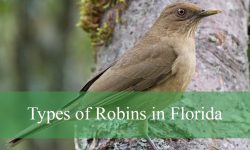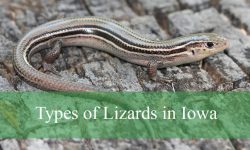Scattered across Tennessee’s fields, forests, and backyards, biting ants are more than just a nuisance. Their painful bites and stings can disrupt outdoor activities and occasionally trigger allergic reactions. Understanding these ants is essential for both safety and prevention.
From the aggressive Red Imported Fire Ant to the tiny but persistent Little Black Ant, each species has unique traits, behaviors, and habitats. Recognizing their appearance and nesting patterns helps homeowners and outdoor enthusiasts avoid painful encounters.
This guide covers 10 common biting ant species in Tennessee, providing detailed identification tips, pictures, and insight into their behavior. Whether for safety, curiosity, or pest management, knowing these ants can make a significant difference.
Common Biting Ants Found in Tennessee
Southern Fire Ant (Solenopsis xyloni)
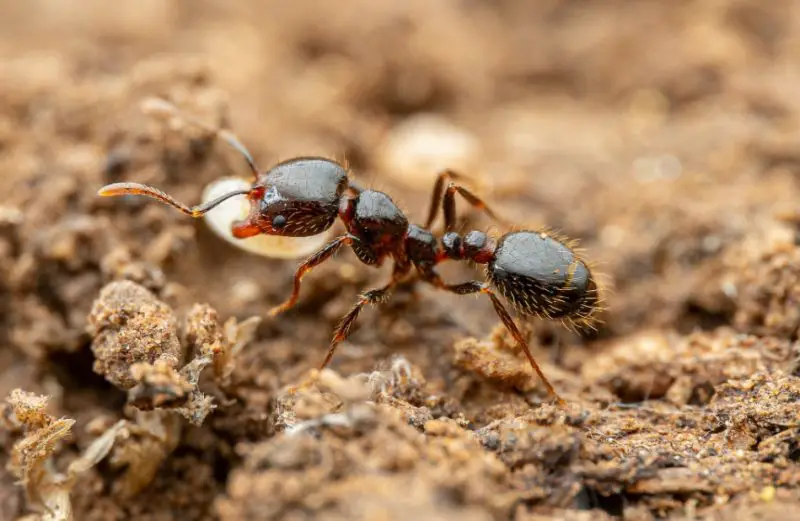
Southern Fire Ants are slightly smaller than Red Imported Fire Ants, ranging from 2–5 mm. They are reddish to brown in color with darker abdomens and a shiny exoskeleton. These ants are highly territorial and can deliver stings similar to Red Imported Fire Ants, causing burning sensations.
They are identified by their reddish-brown coloration, smooth body, and the presence of small, aggressive colonies that usually have irregular mound structures. Unlike imported fire ants, their mounds are often less conspicuous and spread across open soil.
Southern Fire Ants bite and sting simultaneously, injecting venom that can lead to mild to moderate pain. While they are less aggressive than Red Imported Fire Ants, they still defend their territory fiercely, especially when their nests are disturbed. Pets and children are particularly susceptible to stings.
In Tennessee, Southern Fire Ants are mostly found in sandy soils and open fields, particularly in the southern and western parts of the state. They thrive in disturbed areas like roadsides, lawns, and pastures, often forming colonies near human activity.
Red Imported Fire Ant (Solenopsis invicta)
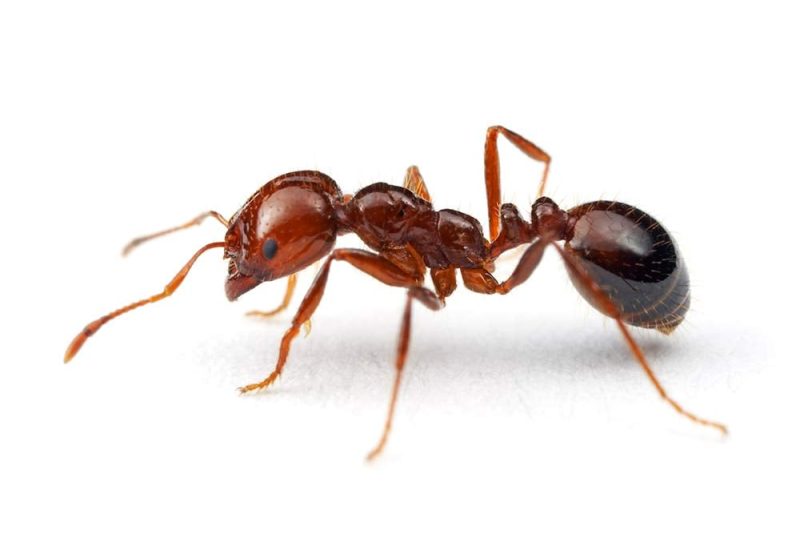
Red Imported Fire Ants are small, reddish-brown ants measuring about 2–6 mm in length. They have a dark brown to black abdomen, and their body is covered with tiny spines. These ants are aggressive and can swarm quickly when disturbed, delivering painful stings that may cause pustules or allergic reactions.
They are identified by their reddish head and thorax contrasted with a darker abdomen. Their colonies often have large mounds of soil that can reach up to 18 inches in height. Unlike some ants, their mounds lack a central entrance hole, as the ants enter and exit from numerous points around the mound.
Fire ants are notorious for their painful, burning stings. They inject venom containing alkaloids that cause intense pain and itching. Multiple stings in a single encounter are common because they swarm in large numbers. People and animals are both at risk if mounds are accidentally disturbed.
In Tennessee, Red Imported Fire Ants are widespread, especially in the central and southern regions. They prefer open, sunny areas such as lawns, fields, and parks. Their invasive nature allows them to outcompete native ant species, making them a significant concern for both humans and wildlife.
Allegheny Mound Ant (Formica exsectoides)
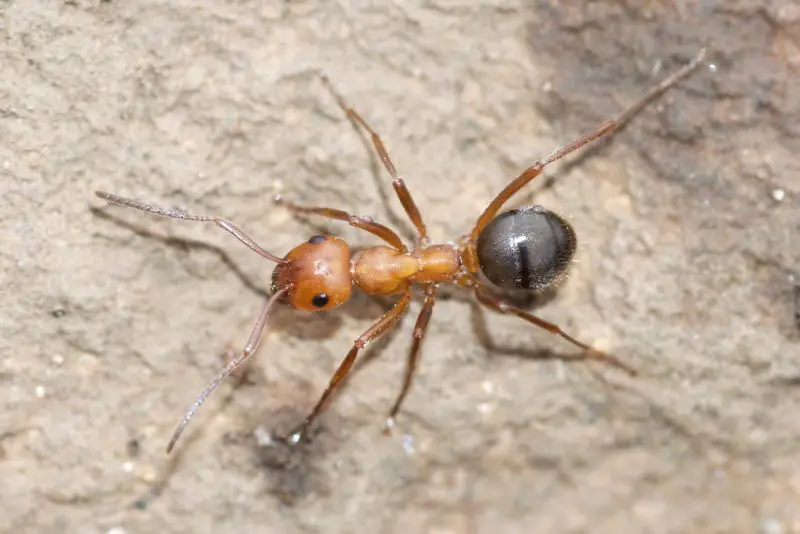
Allegheny Mound Ants are medium-sized ants, measuring 6–8 mm in length. They are reddish-brown with a darker head and thorax and are known for constructing large, dome-shaped mounds that can reach over 3 feet in diameter. These mounds often have complex underground tunnels.
They are identified by their distinctive mound structures and reddish coloration. Unlike fire ants, they do not swarm aggressively, but they defend their nests by biting repeatedly. The ants have strong mandibles that can pinch human skin painfully.
Their bites are sharp but usually not dangerous unless a person is allergic. The ants can also spray formic acid from their abdomens, which intensifies the sting. While not as aggressive as fire ants, they will defend their mounds if disturbed.
Allegheny Mound Ants are common in Tennessee’s forested areas, particularly in the eastern regions. They prefer well-drained soil and wooded habitats but can also be found near open grassy areas, creating prominent mounds that are hard to miss.
Carpenter Ant (Camponotus pennsylvanicus)
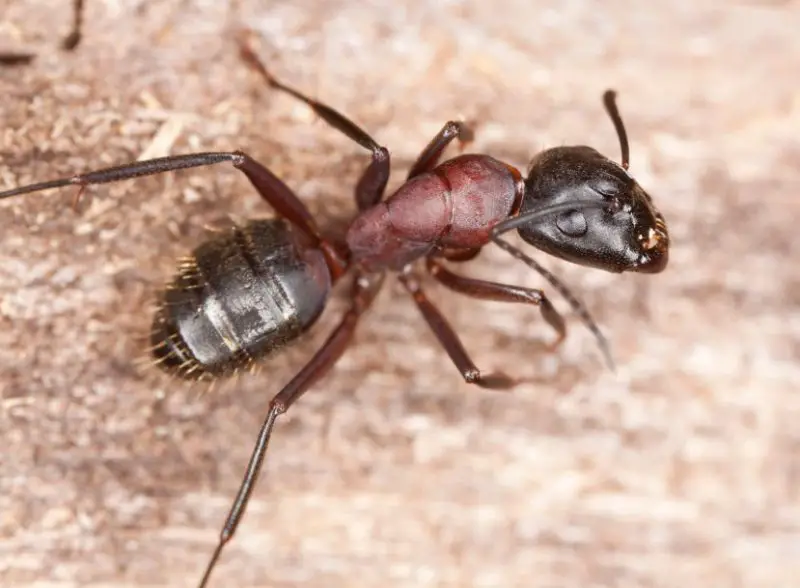
Carpenter Ants are among the largest ants in Tennessee, measuring 6–13 mm. They are black or dark brown, sometimes with reddish markings. These ants are primarily nocturnal and are more likely to bite defensively rather than aggressively swarm.
Identification is relatively easy due to their size and smooth, rounded thorax. Carpenter Ants do not sting, but their strong mandibles can deliver a painful bite, and they may spray formic acid to deter predators. They hollow out wood to create nests, which can lead to structural damage in homes.
Their bite feels sharp and is often accompanied by a mild burning sensation if formic acid is released. While generally not dangerous, bites can become irritated or infected if scratched excessively. Humans rarely experience severe reactions from carpenter ant bites.
In Tennessee, Carpenter Ants are widespread, especially in wooded areas and older buildings. They prefer moist, decaying wood but can also nest in structural timbers, causing concern for homeowners. Eastern and central Tennessee are particularly prone to infestations.
Little Black Ant (Monomorium minimum)
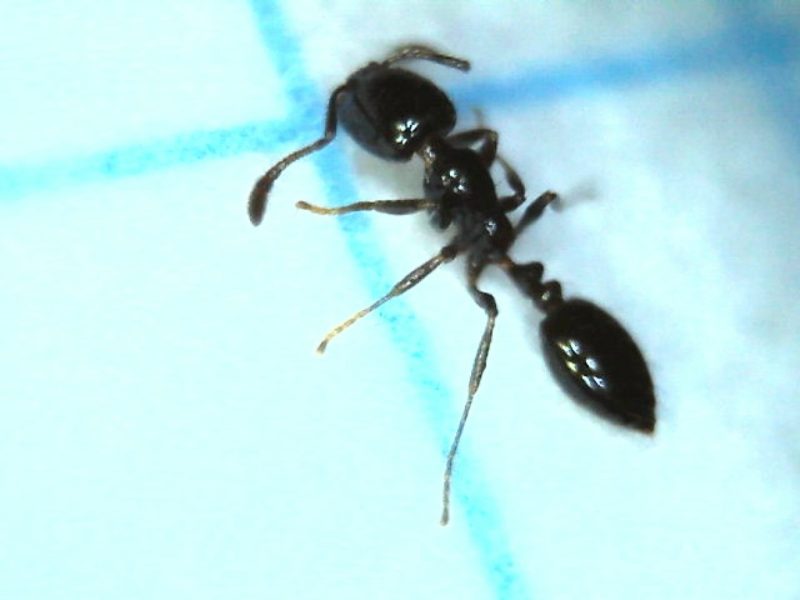
Little Black Ants are tiny, measuring 1.5–2 mm in length, and are uniformly black. They are slow-moving and often forage in large numbers. Though they can bite, their stings are minor and generally cause only mild irritation.
They are identified by their small size, black coloration, and preference for nesting in soil, under stones, or inside decaying wood. Colonies are often large, with multiple queens, allowing rapid population growth.
Their bites are not as painful as those of fire ants or mound ants but can cause localized itching. They tend to bite defensively when directly handled, rarely posing serious health risks. These ants can contaminate food if they enter homes in search of sweets or proteins.
Little Black Ants are common throughout Tennessee, inhabiting lawns, gardens, and forest edges. They adapt well to human environments, often nesting near buildings, sidewalks, and flower beds, particularly in moist areas.
Pavement Ant (Tetramorium immigrans)
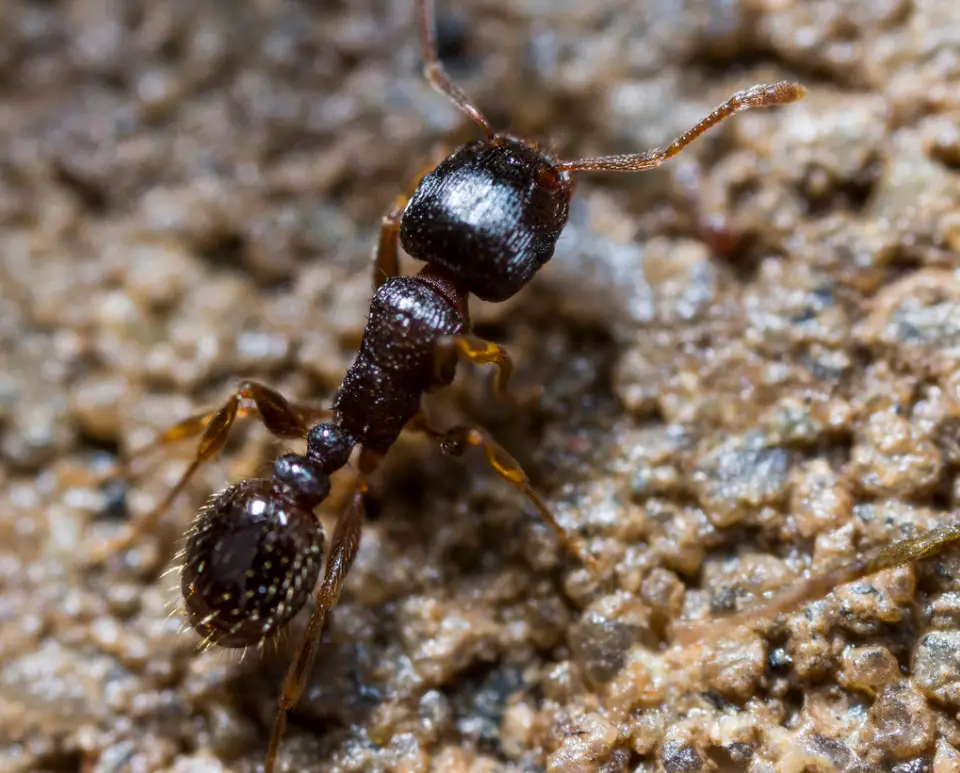
Pavement Ants are small ants, about 2–4 mm long, with dark brown to black bodies and lighter-colored legs. They are named for their habit of nesting under pavement, sidewalks, and building foundations. While their bite is minor, it can cause localized irritation.
They are identified by the two distinct spines on their thorax and parallel lines (striations) on their head and thorax. Pavement Ants form dense colonies with multiple nests connected by underground tunnels, which can extend beneath sidewalks and driveways.
Pavement Ants bite defensively when their nest is disturbed. Their bites are usually not painful but can leave small red marks. They do not sting but may spray formic acid, producing a mild burning sensation.
In Tennessee, Pavement Ants are abundant in urban and suburban areas. They prefer well-drained soils and human structures, often nesting under pavement, stones, or concrete slabs. Their presence is most noticeable when they invade kitchens in search of food.
Acrobat Ant (Crematogaster spp.)
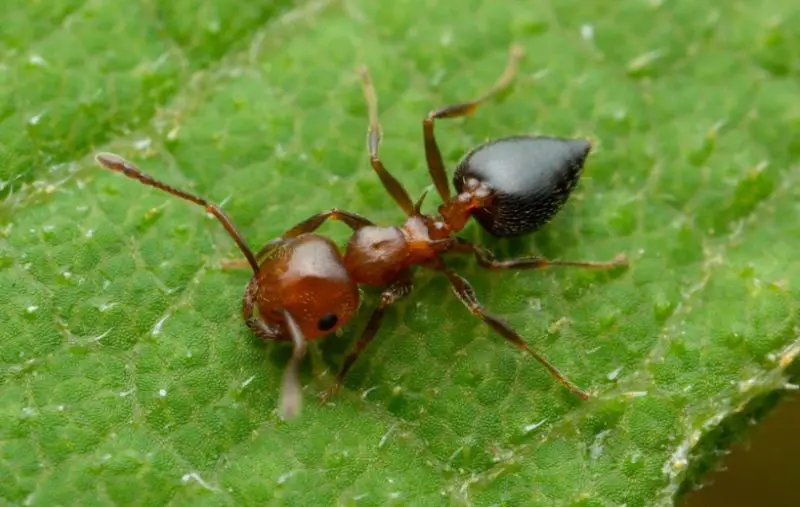
Acrobat Ants are tiny, measuring 2–5 mm, with heart-shaped abdomens that can be raised above their thorax, giving them a distinctive posture. They range from reddish-brown to black and are named for this acrobatic ability when threatened.
They are identified by their small size, flexible abdomen, and habit of nesting in decaying wood, tree stumps, or inside wall voids. Acrobat Ants can form large colonies but are usually less aggressive than fire ants.
Their bite is mild, often accompanied by the release of a small amount of formic acid. While not particularly painful, bites may cause localized redness or itching. They bite defensively, usually only if handled or if their nest is disturbed.
In Tennessee, Acrobat Ants are commonly found in forested areas and near human structures. They prefer damp, decaying wood and may become a nuisance when nesting inside homes, particularly in attics or behind walls.
Field Ant (Formica spp.)
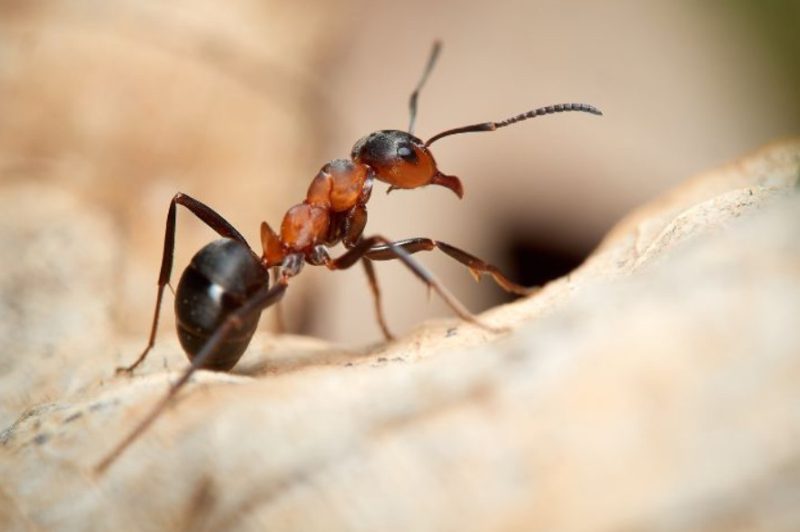
Field Ants are medium-sized ants, ranging from 4–9 mm in length. They are typically reddish-brown or black and build large mounds in open areas such as meadows, pastures, and lawns. They are known for their territorial behavior and strong bites.
They are identified by their mound structures, reddish coloration, and smooth, shiny bodies. Unlike fire ants, Field Ants generally do not swarm aggressively but will defend their territory with repeated bites.
Their bites can be painful and are often accompanied by the release of formic acid, which produces a mild burning sensation. Though not dangerous, repeated bites can irritate the skin and cause itching or minor swelling.
Field Ants are widespread in Tennessee, particularly in rural and suburban open spaces. They prefer sandy or loamy soils and are often observed patrolling near their mounds. Their presence is more noticeable in warmer months when foraging activity increases.
Odorous House Ant (Tapinoma sessile)
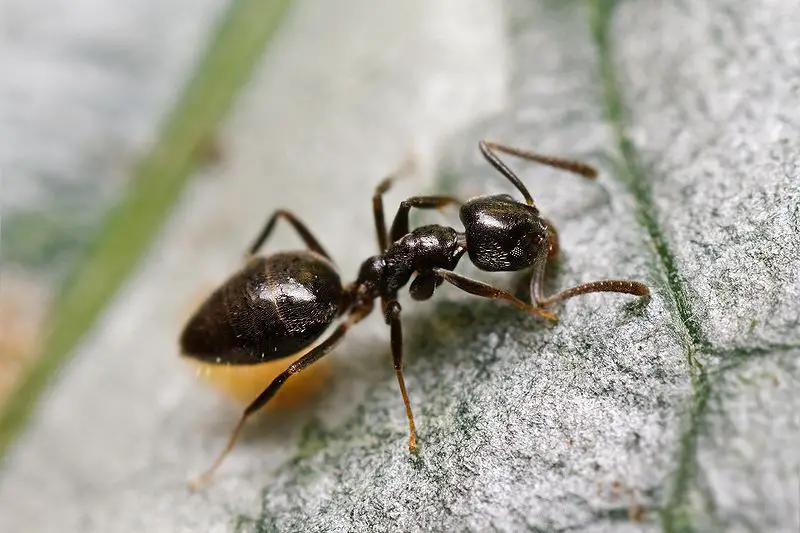
Odorous House Ants are tiny, 2–3 mm long, and dark brown to black. They emit a distinct, coconut-like odor when crushed. These ants do not sting but can bite defensively, causing minor irritation.
They are identified by their small size, dark coloration, and strong odor when disturbed. Odorous House Ants often nest in soil, under rocks, or inside buildings, and they can quickly establish multiple colonies in a single area.
Their bites are mild and rarely cause more than slight discomfort. However, they are persistent foragers and can contaminate food indoors, especially sweets and proteins. Their bites are more of a nuisance than a medical concern.
Odorous House Ants are common throughout Tennessee, especially in homes, gardens, and urban areas. They thrive in humid environments and can enter buildings through tiny cracks, making them a frequent indoor pest.
Pyramid Ant (Dorymyrmex insanus)

Pyramid Ants are small, 2–4 mm in length, and light brown to tan. They are named for the small, pyramid-shaped projection on their thorax. These ants are fast-moving and can bite defensively, although their bites are minor.
They are identified by the unique thorax shape and rapid, erratic movements. Pyramid Ants prefer open, sunny areas with dry, sandy soils and form small mounds or nest in soil cracks.
Their bites are not considered dangerous but can cause mild irritation. These ants bite mainly in defense and rarely sting, posing minimal risk to humans or pets. They are more of an outdoor nuisance than an indoor threat.
Pyramid Ants are primarily found in Tennessee’s central and southern regions, favoring dry, open habitats like fields, lawns, and roadsides. Their nests are usually small but can be numerous in a given area, making them highly visible during foraging.
FAQs About Biting Ants in Tennessee
What are the most common biting ants in Tennessee?
The most common biting ants in Tennessee include Red Imported Fire Ants, Southern Fire Ants, Allegheny Mound Ants, Carpenter Ants, Little Black Ants, Pavement Ants, Acrobat Ants, Field Ants, Odorous House Ants, and Pyramid Ants. Fire ants are particularly aggressive and pose the most painful bites.
Do all biting ants in Tennessee sting?
No, not all biting ants sting. Fire ants (Red Imported and Southern) deliver venomous stings, while other species like Carpenter Ants and Odorous House Ants primarily bite defensively. Some ants, like Allegheny Mound Ants, may spray formic acid to intensify the bite.
How can I identify fire ants in Tennessee?
Fire ants are reddish-brown with darker abdomens. They build noticeable mounds in open, sunny areas and swarm aggressively when disturbed. Red Imported Fire Ants often have multiple entrance points around their mounds, while Southern Fire Ant mounds are smaller and less conspicuous.
Are biting ants dangerous to humans?
Most biting ants are not deadly, but their bites can be painful and cause itching or minor swelling. People allergic to ant venom, especially from fire ants, may experience more severe reactions such as hives, difficulty breathing, or anaphylaxis, requiring immediate medical attention.
Where are biting ants usually found in Tennessee?
Biting ants are found throughout Tennessee, depending on the species. Fire ants prefer open fields, lawns, and parks. Carpenter Ants and Acrobat Ants are often in decaying wood or homes. Pavement and Odorous House Ants are common near sidewalks, driveways, and inside buildings.
How can I prevent ant bites at home or outdoors?
Avoid disturbing ant mounds and nests, wear shoes outdoors, and keep food and sugary drinks covered. Regularly inspect homes and gardens for nests, seal entry points, and consider professional pest control for aggressive species like fire ants.
What should I do if bitten by a biting ant?
Clean the bite with soap and water, apply ice to reduce swelling, and use over-the-counter antihistamines or creams to relieve itching. For fire ant stings, monitor for allergic reactions, and seek medical help if severe symptoms occur.


